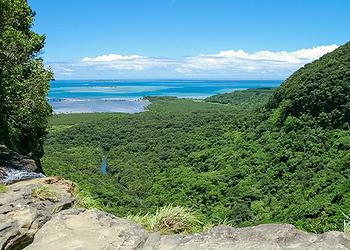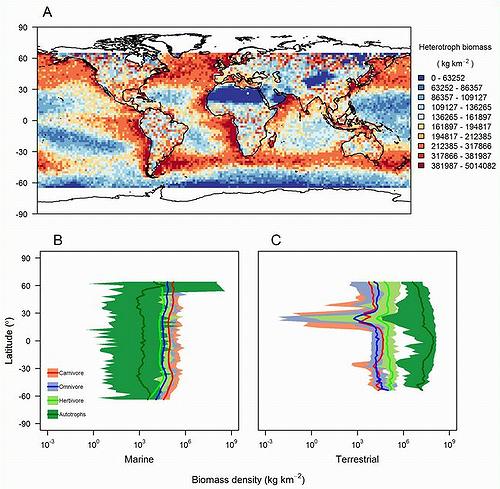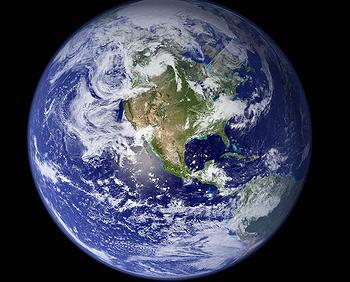Human Impact on Earth Predictable in Microsoft-UNEP Simulation
CAMBRIDGE, UK, May 2, 2014 (ENS) – The first computer model that can simulate how all living creatures interact on a global or local scale has been released by Microsoft and the UN Environment Programme to help scientists and policy makers answer crucial environmental questions.
Microsoft’s Computational Science Lab and United Nations Environment Programme World Conservation Monitoring Centre, based in Cambridge, have created this simulation of life on Earth, following a set of basic ecological tools found in the real world.
The open source technology allows scientists, for the first time, to simulate how all organisms on earth interact in a changing environment.
The Madingley model can assess and predict human impacts on a wide range of ecosystems. It can be applied to any ecosystem, marine or terrestrial, and can be applied at any scale from local to global.
Because the Madingley Model is open sourced, the developers hope the scientific community will dissect and improve on the current version.
“Ecosystems across the world are being rapidly degraded. This threatens their provision of natural goods and services, upon which all life depends,” the authors of a study describing the new model say in the journal “PLOS Biology.”
“To be able to reduce – and one day reverse – this damage, we need to be able to predict the effects of human actions on ecosystems,” say the authors.
The Madingley model can provide long-term, predictive and truly global insight lacking in other computer models.

Complex ecosystem of coral reefs, mangroves, rivers, rainforests, mountains, waterfalls and beaches on Iriomote Island, Okinawa, Japan (Photo by Ippei & Janine Naoi)
The authors write, “Our results indicate that ecologists have gathered sufficient information to begin to build realistic, global, and mechanistic models of ecosystems, capable of predicting a diverse range of ecosystem properties and their response to human pressures.”
Announcing the new model on April 28, UNEP Executive Director Achim Steiner said, “Anthropogenic activities are causing widespread degradation of ecosystems worldwide, threatening the ecosystem services upon which all life depends. Madingley is an exciting new technology which offers the scientific community and world leaders a vital tool to anticipate how unsustainable development pathways would affect the natural world.”
“The model is the first to couple all of the key biological processes and ecological theory that underpin the life cycle and behavior of living organisms, from energy acquisition, to feeding metabolism, reproduction, dispersal and earth,” said Steiner.
“The tool will improve our understanding of the causes and impacts of degradation, helping scientists and governments develop avoidance and mitigation measures,” he said.
The team initially simulated the physical Earth with continents, oceans and a global climate, before inserting digital organisms.

The result of a Madingley simulation showing the biomass of heterotrophs, organisms that cannot fix carbon and use organic carbon for growth. (Image courtesy PLOS Biology)
As the simulations progress over time, scientists are able to observe and assess how different types of organisms interact with environmental niches and how they might be impacted by a changing environment.
“Our model is a first working version which will hopefully encourage other scientists to become involved in developing this, or analogous, global models of life” said Drew Purves, head of the Microsoft Research Computational Ecology and Environmental Science group and co-author of the initiative.
The Madingley model covers almost all organisms in ecosystems, from the smallest to the largest, encoding the underlying biology and behavior of individual organisms to capture the interactions between them and with the environment, to model the fate of each individual organism, and to make predictions about ecosystem structure and function.
“Predictions made by the Madingley Model broadly resemble what we observe in real-world ecosystems across scales from individuals through to communities, ecosystems, and the world as a whole,” say the authors.
“Our results show that ecologists can now begin modelling all nonhuman life on earth, and we suggest that this type of approach may hold promise for predicting the ecological implications of different future trajectories of human activity on our shared planet,” they say.
Scientists using the Madingley Model will now be able to answer crucial questions previously unanswerable. They will, for example, be able to show what will happen to an ecosystem if bees become extinct. They will be able to show decision makers how our world will look if action is not taken to safeguard our planet’s future.
Copyright Environment News Service (ENS) 2014. All rights reserved.
http://ens-newswire.com/2014/05/02/human-impact-on-earth-predictable-in-microsoft-unep-simulation/
